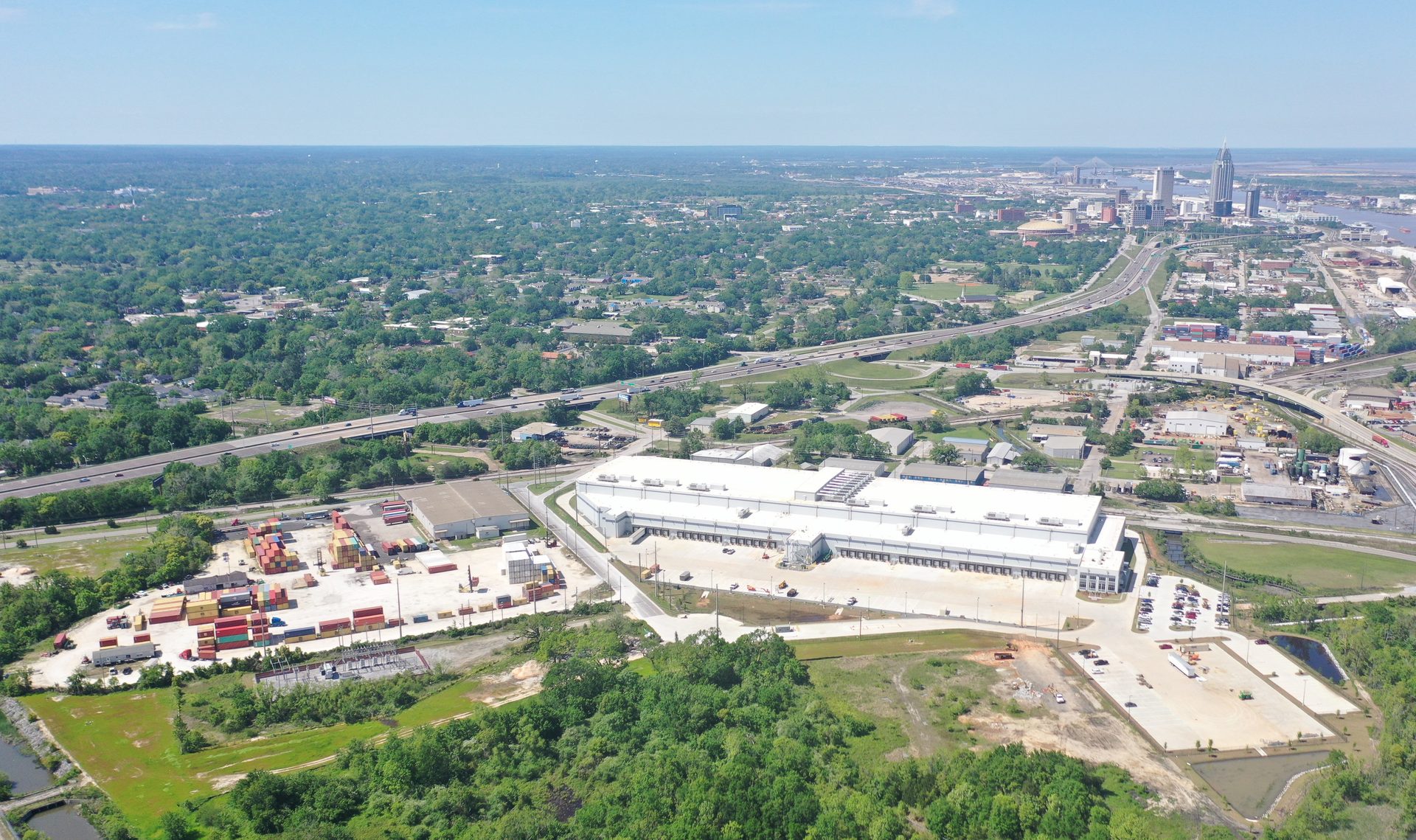COLD STORAGE
Hot Cities for Cold Storage:
Mobile
Image courtesy of George Dodd | Getty Images
Kelley Rodriguez is Editor-In-Chief of Refrigerated & Frozen Foods
By Kelley Rodriguez
The Gateway to the Gulf, Mobile is Alabama’s oldest city and among the fastest growing containerized cargo seaports in North America.
With importance as a trading center dating back to French colonists and Native Americans and Alabama’s place as one of the largest poultry producing states in the U.S., the Port of Mobile is poised for expansion in 2023.
Located in the northern Gulf of Mexico with access to an international airport and two interstate systems (I-65 running north/south and I-10 running east/west), the Port of Mobile saw record container shipping numbers in 2022, with 563,191 twenty-foot equivalent container units (TEUs) handled. Since, 2015, the Port of Mobile’s volume has grown by 120%, according to figures provided by the Alabama Port Authority.
“Location, location, location. Located in the heart of the booming southern United States and with an aggressively expanding port, Mobile is an effective location for import distribution, domestic distribution and export cargos,” said Ernie Ferguson, director of Business Development for Lineage Logistics, who in 2021 opened a $61 million cold storage and distribution center at the Port of Mobile, one of the largest of its kind in the Southeast.
“For import and domestic production, Mobile can serve as a distribution hub, effectively serving Atlanta, north Florida and the entire Gulf Coast,” Ferguson said. “With close proximity to the heart of poultry production, Mobile is an ideal location for those processors to export frozen poultry around the globe.”
Just two years ago the port had around 5 million cubic feet of storage. Lineage’s facility more than doubled that total space, to 17 million cubic feet, and added 40,000 pallet positions.
“The facility is located less than a mile for the container terminal gate and offers max-loading capabilities where only the cargo capacity of the container is restrictive. Additionally with capacity for 30 truckloads of blast per day, the facility can support a significant volume of protein exports,” Ferguson said.
In Lineage’s second year of operations at the Mobile location, demand remains strong for both import and export cargos.
“For example, in 2021, there was no direct service to Central and South America. One service was added in 2022 by Sealand and expectations are there will be four services by May, providing a strong South American presence to go with an already robust Asia service offering,” he said.
In 2021, refrigerated containers posted a 50% increase in volume compared to 2020. In addition to the Lineage location, the Port of Mobile is undertaking several simultaneous construction projects to accommodate future growth.

Since, 2015, the Port of Mobile’s volume has grown by 120%. Image courtesy Lineage Logistics.
A $104 million Phase IV expansion will increase container capacity to 1 million TEUs by 2025.
More than $360 million in federal funds will help deepen and widen the shipping channel to 50 feet, allowing the largest of ocean container vessels to call the port. Once the channel deepening and widening project is completed, the Port of Mobile will be the deepest container terminal in the Gulf of Mexico.
And, the Port Authority plans to develop logistics facilities in Mobile and open a new inland intermodal facility in 2024, served by CSX in Montgomery, Alabama.
“Time and again, we are showing that shipping through Mobile is an efficient and cost-effective way for businesses to get their goods into or out of the United States,” Port Authority Director and CEO John C. Driscoll said when announcing the port’s 2022 figures. “These numbers reflect shippers’ confidence in Alabama’s Port, and Mobile has consistently offered supply chain stability.”

Lineage Logistics’ Mobile facility more than doubled the port’s total storage space to 17 million cubic feet, and added 40,000 pallet positions. Image courtesy Lineage Logistics.
Other planned investments include constructing a fly-over bridge to create on-dock rail access at the container terminal, modernizing general cargo piers, and developing an inland intermodal facility in North Alabama.
The port’s container, general cargo and bulk facilities have immediate access to two interstate systems, five Class 1 railroads, and nearly 15,000 miles of inland waterways. It is credited with $85 billion in annual economic impact and over 312,000 jobs across the state.
Other food-related projects in Alabama include Aldi’s new 564,000-square-foot distribution center and divisional headquarters, which will serve over 100 stores in southern Alabama, Mississippi, Louisiana and the Florida panhandle. Smucker’s is building a $1 billion manufacturing facility and distribution center in McCalla, Alabama, dedicated to producing its Smucker’s Uncrustables sandwich and John Soule’s Foods’ is expanding and upgrading its Valley, Alabama, plant.

